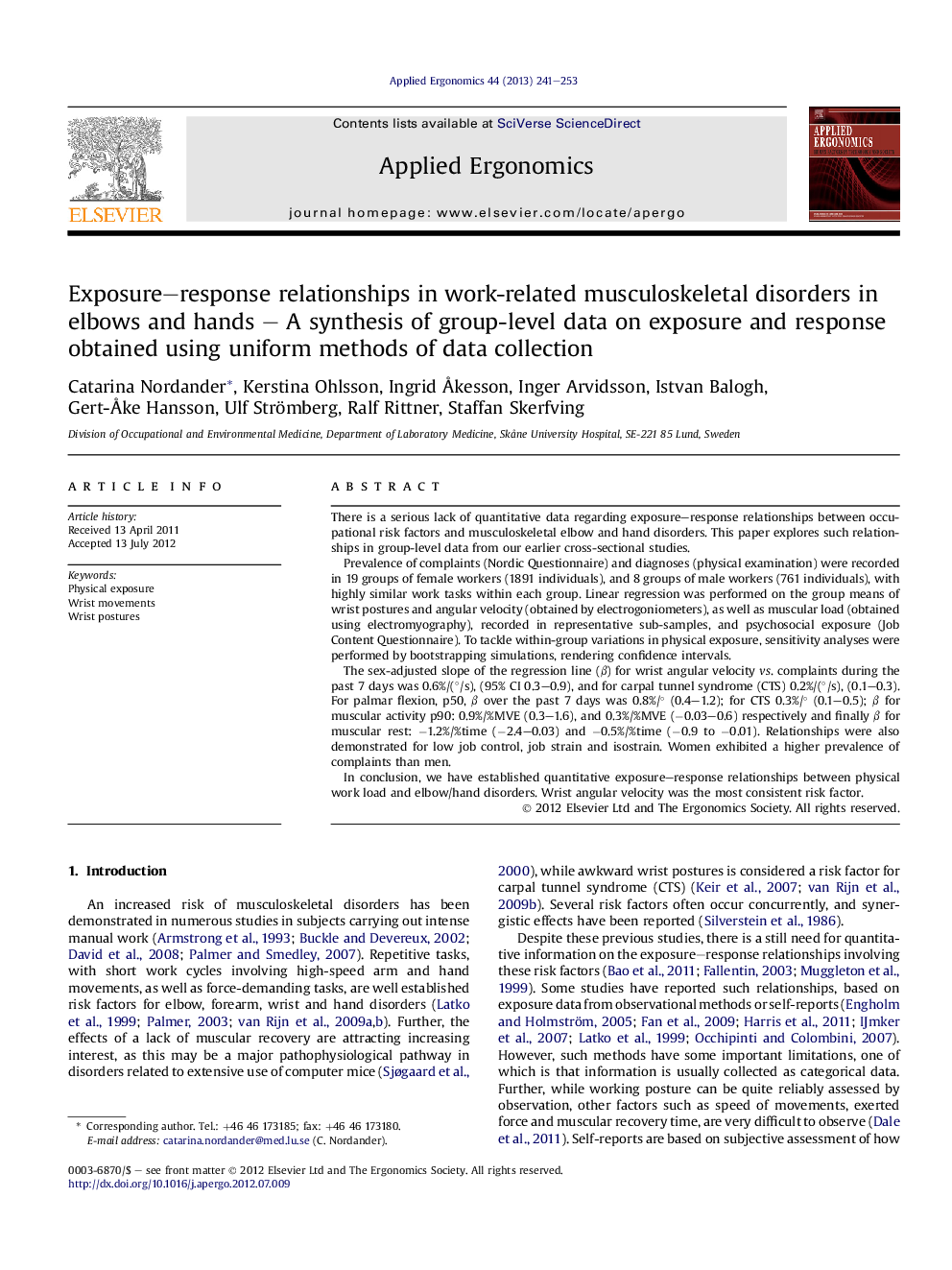| کد مقاله | کد نشریه | سال انتشار | مقاله انگلیسی | نسخه تمام متن |
|---|---|---|---|---|
| 548719 | 872262 | 2013 | 13 صفحه PDF | دانلود رایگان |

There is a serious lack of quantitative data regarding exposure–response relationships between occupational risk factors and musculoskeletal elbow and hand disorders. This paper explores such relationships in group-level data from our earlier cross-sectional studies.Prevalence of complaints (Nordic Questionnaire) and diagnoses (physical examination) were recorded in 19 groups of female workers (1891 individuals), and 8 groups of male workers (761 individuals), with highly similar work tasks within each group. Linear regression was performed on the group means of wrist postures and angular velocity (obtained by electrogoniometers), as well as muscular load (obtained using electromyography), recorded in representative sub-samples, and psychosocial exposure (Job Content Questionnaire). To tackle within-group variations in physical exposure, sensitivity analyses were performed by bootstrapping simulations, rendering confidence intervals.The sex-adjusted slope of the regression line (β) for wrist angular velocity vs. complaints during the past 7 days was 0.6%/(°/s), (95% CI 0.3–0.9), and for carpal tunnel syndrome (CTS) 0.2%/(°/s), (0.1–0.3). For palmar flexion, p50, β over the past 7 days was 0.8%/° (0.4–1.2); for CTS 0.3%/° (0.1–0.5); β for muscular activity p90: 0.9%/%MVE (0.3–1.6), and 0.3%/%MVE (−0.03–0.6) respectively and finally β for muscular rest: −1.2%/%time (−2.4–0.03) and −0.5%/%time (−0.9 to −0.01). Relationships were also demonstrated for low job control, job strain and isostrain. Women exhibited a higher prevalence of complaints than men.In conclusion, we have established quantitative exposure–response relationships between physical work load and elbow/hand disorders. Wrist angular velocity was the most consistent risk factor.
► Physical and psychosocial exposure was quantified in several occupational groups.
► Wrist angular velocity was the most consistent risk factor for disorders.
► Prevalence of past 7 days complaints increased by 0.6% per °/s increase in velocity.
► Prevalence of carpal tunnel syndrome increased by 0.2% per °/s increase.
► This knowledge permits objective quantitative occupational exposure limits.
Journal: Applied Ergonomics - Volume 44, Issue 2, March 2013, Pages 241–253